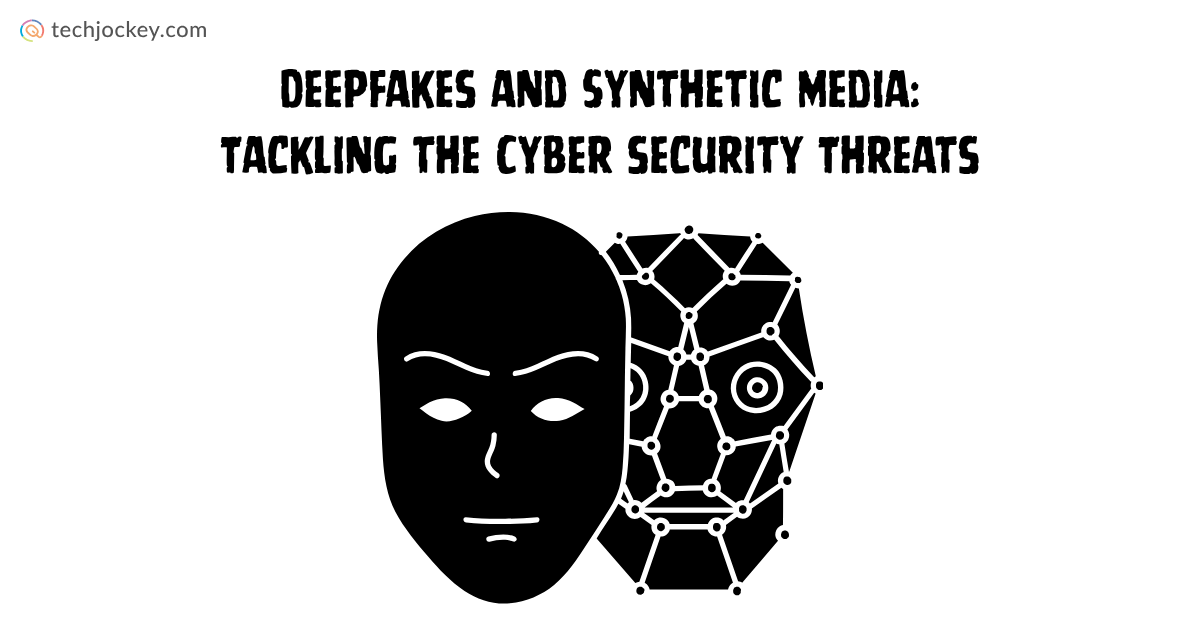December 21, 2023

Deepfakes and synthetic media technologies have blurred the line between fact and fiction in the digital sphere. It has been increasingly hazy over the last few years, slowly but surely.
From being a novel concept in Hollywood, sophisticated artificial intelligence (AI)-powered synthetic media has developed into a useful tool that politically motivated threat actors and cyber criminals utilize on a regular basis for fraud and disinformation.
Deep fakes are fake media (typically audio and video) that claim to represent real-life happenings or real-life-like behaviors of a person(s). They utilize advanced technologies in machine learning and artificial intelligence (AI), especially generative adversarial networks (GANs).
GANs employ two AI models – the discriminator, which evaluates the validity of the material, and the generator, which creates the material. The discriminator repeatedly judges the likelihood of the content as the generator is giving out increasingly realistic fake movies or sounds. It leads to a quick increase in the quality and believability of the manufactured fakes.
1. Misinformation and Propaganda: By creating convincing fake videos or audio recordings, deepfakes can spread false information or propaganda. Deepfakes have the potential to alter the opinion of the population and could interfere with the process of politics or manipulate the stock market.
2. Identity Theft and Fraud: It is possible to impersonate a person using deepfakes, and the consequences are identity theft and fraud. It can be especially harmful when someone does this to impersonate business executives or government officials, with disastrous consequences of financial fraud or misinformation spread.
3. Social Engineering Attacks: Deepfakes are capable of enhancing the efficiency of phishing/social engineering attacks. As an example, a CEO can use a deepfake audio to order an employee to send money or leak confidential data.
4. Erosion of Trust: An erosion of trust in digital media in general can be caused by the possibility of making convincing fake content. Making it difficult to identify fact and fiction, and possibly compromising the integrity of legitimate messages.
4. Legal and Ethical Implications: Deepfakes cause significant legal and ethical issues, especially in the areas of consent, privacy, and defamation. This puts forward new challenges to legal systems and regulatory structures.
5. Targeted Manipulation: Specific individuals or organizations can tailor deepfake content to create content that will harm reputations, blackmail individuals, or inflict havoc within an organization.
6 . National Security Concerns: On a grander level, enemies can deploy deepfakes as weapons in cyber warfare and espionage, and they pose a risk to national security by generating fake accounts or provoking conflicts.
AI can be used for good or harm, just like any other technology, and efforts are being made to create AI-driven techniques to identify and counteract the threat posed by deepfakes. A large portion of these initiatives concentrate on using voice biometrics and facial expression analysis to identify tiny abnormalities that are invisible to the human eye and ear.
More and more, blockchain technology, more commonly linked to cryptocurrencies, is showing promise as an effective weapon in this conflict. Blockchain technology offers a means of confirming media file validity and provenance, as well as detecting any alterations.
Digital content can be authenticated and its interaction history, including any changes, tracked with the help of so-called “smart contracts.” When used in conjunction with AI that can identify media content as possibly fraudulent, a smart contract can start a review procedure or notify pertinent authorities or stakeholders.
To make sure that information produced by AI platforms can be identified as artificial, more technologies are being developed. For instance, AI-generated audio output can have inaudible “watermarks” added by Google’s SynthID.
In the future, methods such as SynthID will make sure that AI tools can accurately identify content created artificially, even after a human or other editing tools have edited it.
Education and awareness programs are also significant in the fight against deepfakes, as in other fields of cybersecurity. It will be required to educate individuals and organizations regarding deepfakes, their identification, and the possible effects of deepfakes.
Technology Companies, experts, and respective institutions will need to enter into a partnership that will be critical in ensuring more comprehensive strategies are developed to fight synthetic media and content by deepfakes, among others.
We are unable to wish away deepfakes and synthetic media since it has broken free from their bottle. Instead, we will need to develop efficient countermeasures as deepfakes become more common and significant. This will require advancement in a few crucial areas.
Cybersecurity firms and AI creators like OpenAI, as industry leaders, will guide the creation and implementation of AI solutions in addition to the ongoing creation of advanced authentication solutions. This will aid in ensuring that there will be strong defences against deepfake attacks, as well as establishing moral standards.
It will also be necessary to enact new laws and regulations that forbid and punish the production and distribution of deepfakes for malicious intent. The collaboration between states in the legal practices will also be necessary to combat deepfakes effectively due to the transnational nature of the digital media.
As stated earlier, increasing the awareness of the population about deepfakes and enhancing media literacy are important steps to take to counteract the menace of manipulated media. The scale of misinformation can be extremely extensive, and technology and law cannot win over it.
Deepfakes will only keep growing, and it will require a complex approach involving ethical conduct in business, technological innovations, and informed legislative actions, as well as education of the population.
Technology just plays with us when we fail to give ourselves time to understand the implications it comes with or take the required protection. There is much more applicable potential to both AI and deepfakes.
Explore Topics

Consult with Our Techjockey Expert
Connect for fast and scalable software delivery, corporation plans, advanced security, and much more.
Compare Popular Software

Get the latest Techjockey US Blog Updates!
Subscribe to get the first notified about tech updates directly in your inbox.